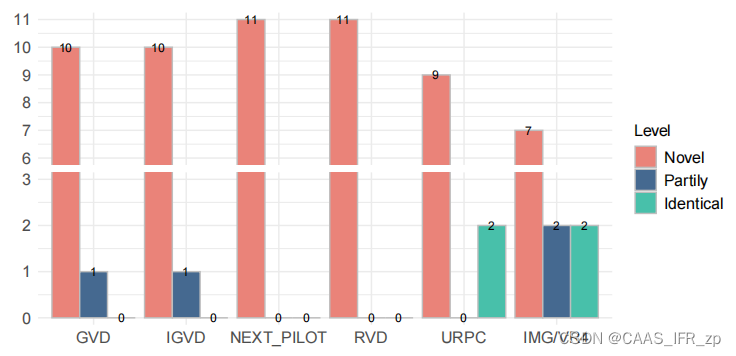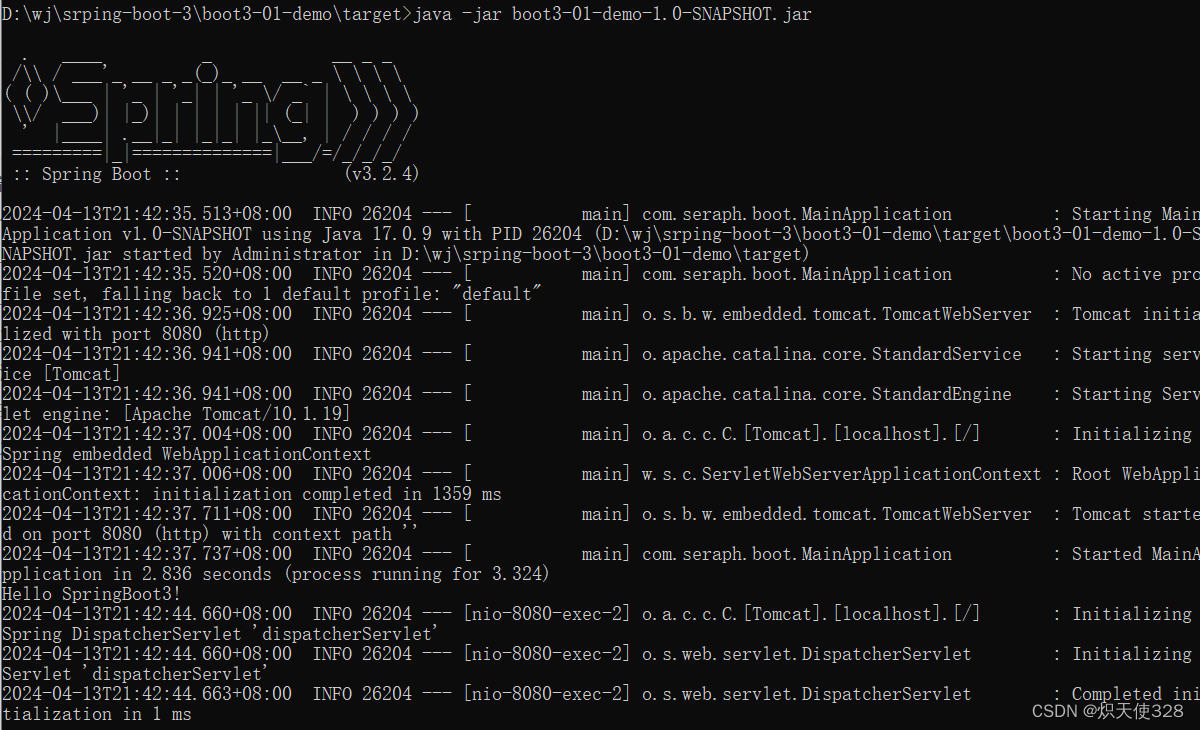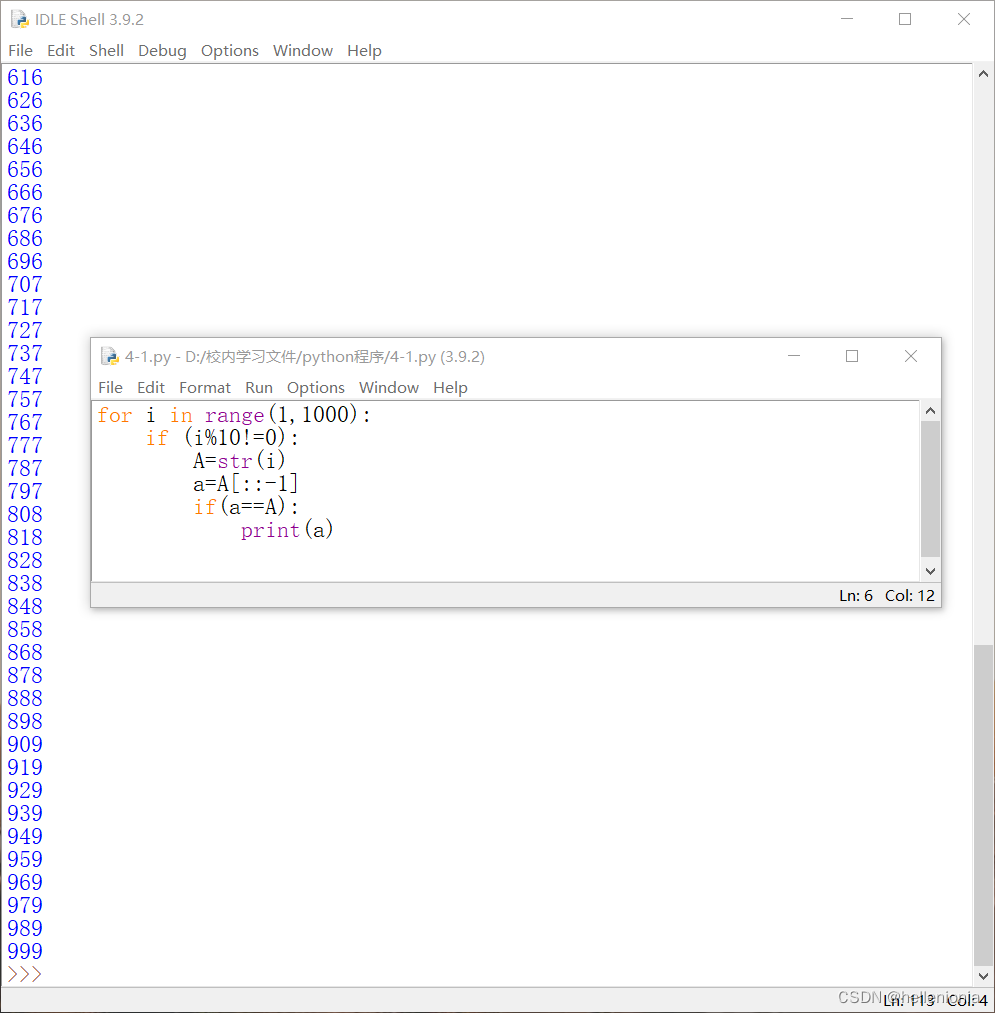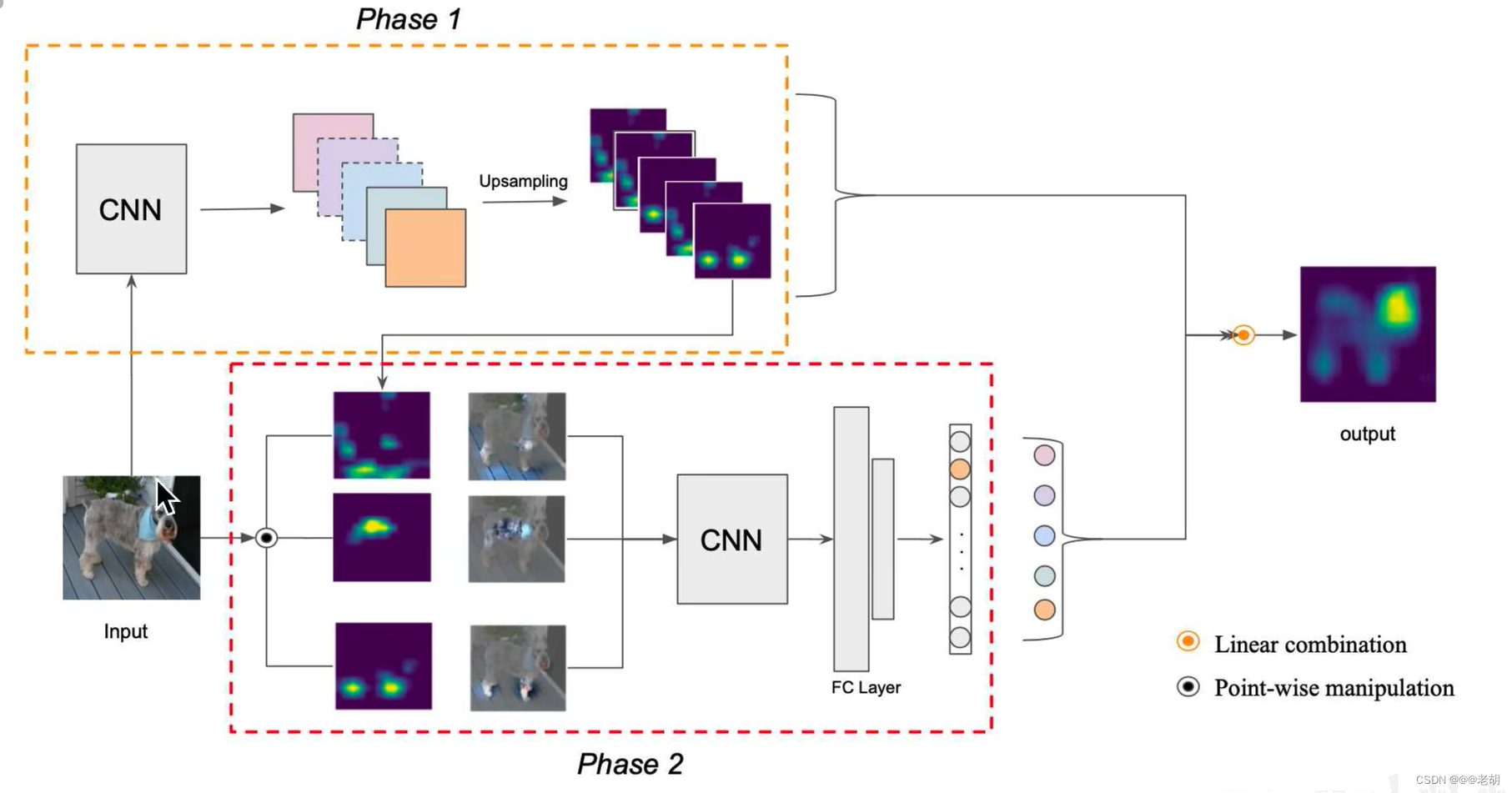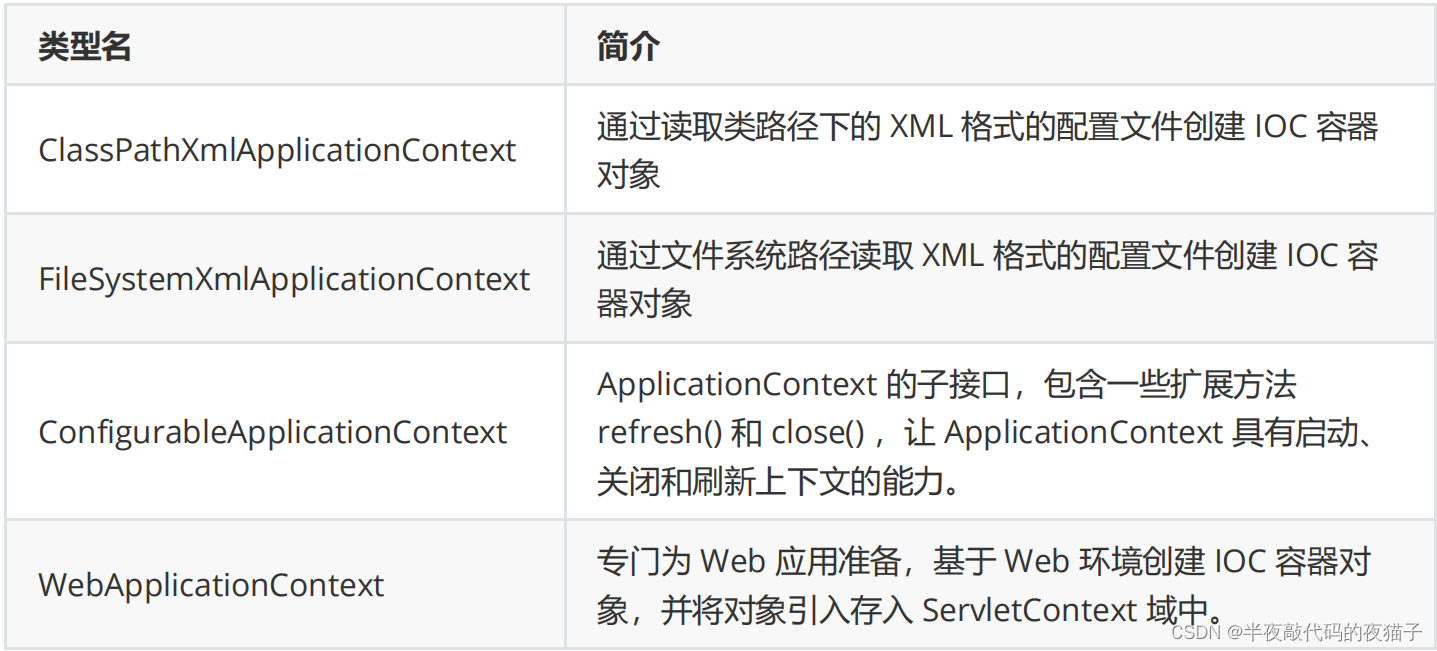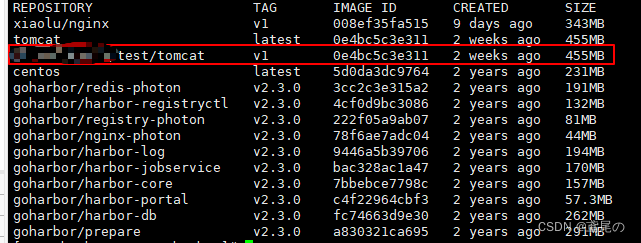STL详解 —— list的介绍及使用
- list的介绍
- list的介绍使用
- list的构造
- list iterator的使用
- list capacity
- list element access
- list modifiers
- 示例
- list的迭代器失效
list的介绍
- list是可以在常数范围内在任意位置进行插入和删除的序列式容器,并且该容器可以前后双向迭代。
- list的底层是双向链表结构,双向链表中每个元素存储在互不相关的独立节点中,在节点中通过指针指向
其前一个元素和后一个元素。 - list与forward_list非常相似:最主要的不同在于forward_list是单链表,只能朝前迭代,已让其更简单高
效。 - 与其他的序列式容器相比(array,vector,deque),list通常在任意位置进行插入、移除元素的执行效率
更好。 - 与其他序列式容器相比,list和forward_list最大的缺陷是不支持任意位置的随机访问,比如:要访问list
的第6个元素,必须从已知的位置(比如头部或者尾部)迭代到该位置,在这段位置上迭代需要线性的时间
开销;list还需要一些额外的空间,以保存每个节点的相关联信息(对于存储类型较小元素的大list来说这
可能是一个重要的因素)
list的介绍使用
list的构造
- 默认构造函数:创建一个空的list容器。
list<int> v;
- 填充构造函数:创建一个具有特定大小的list,可以指定元素的初始值。
list(size_type n,const value_type& val = value_type())
- 拷贝构造函数: 通过复制另一个list来创建一个新的list。
list (const list& x)
- 范围构造函数:通过复制另一个容器或数组的元素范围来创建list。
list (Inputlterator first, Inputlterator last)
//用[first,last)区间中的元素构造list
示例:
list<int> l1; // 构造空的l1
list<int> l2(4, 100); // l2中放4个值为100的元素
list<int> l3(l2.begin(), l2.end()); // 用l2的[begin(), end())左闭右开的区间构造l3
list<int> l4(l3); // 用l3拷贝构造l4
// 以数组为迭代器区间构造l5
int array[] = { 16,2,77,29 };
list<int> l5(array, array + sizeof(array) / sizeof(int));
// 列表格式初始化C++11
list<int> l6{ 1,2,3,4,5 };
list iterator的使用
此处,大家可暂时将迭代器理解成一个指针,该指针指向list中的某个节点。
- begin()
iterator begin();const_iterator begin() const;
- end()
iterator end();const_iterator end() const;
- rbegin()
reverse_iterator rbegin();
const_reverse_iterator rbegin() const;
- rend()
reverse_iterator rend();
const_reverse_iterator rend() const;
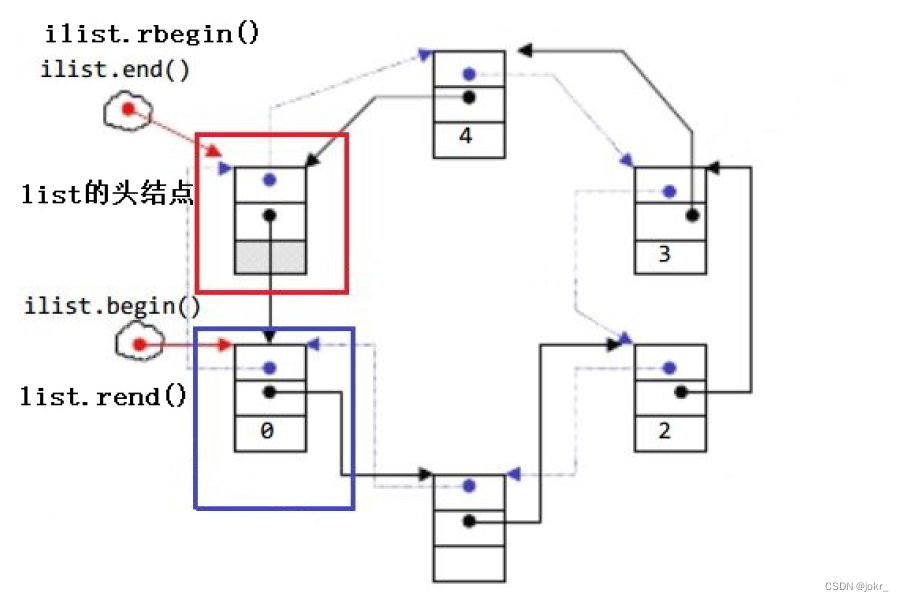
示例
// 用迭代器方式打印l1中的元素
list<int>::iterator it = l1.begin();
while (it != l1.end())
{
cout << *it << " ";
++it;
}
cout << endl;
// C++11范围for的方式遍历
for (auto& e : l1)
cout << e << " ";
cout << endl;
list capacity
- empty()
检测list是否为空,是返回true,否则返回false
bool empty() const;
- size()
返回list中有效节点的个数
size_type size() const;
示例:
list<int> lt;
lt.push_back(1);
lt.push_back(2);
lt.push_back(3);
lt.push_back(4);
lt.push_back(5);
for (auto& e : lt)
{
cout << e << " ";
}
cout << endl;
cout << "lt.size = " << lt.size() << endl;

list element access
- front()
返回list的第一个节点中值的引用
T& front();
- back()
返回list的最后一个节点中值的引l用
const T& front() const;
示例:
list<int> lt;
lt.push_back(1);
lt.push_back(2);
lt.push_back(3);
lt.push_back(4);
lt.push_back(5);
for (auto& e : lt)
{
cout << e << " ";
}
cout << endl;
lt.front()++; //给lt的第一个元素+1
lt.back()++; //给lt的最后一个元素+1
for (auto& e : lt)
{
cout << e << " ";
}
cout << endl;
cout << "lt.size = " << lt.size() << endl;
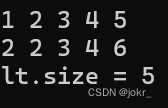
list modifiers
- push_front()
在list首元素前插入值为val的元素
void push_front (const value_type& val);
- pop front()
删除list中第一个元素
void pop_front();
- push back()
在list尾部插入值为val的元素
void push_back (const value_type& val);
- pop back()
删除list中最后一个元素
void pop_back();
- insert()
在listposition位置中插入值为val的元素
single element (1):
iterator insert (iterator position, const value_type& val);
fill (2) :
void insert (iterator position, size_type n, const value_type& val);
range (3) :
template <class InputIterator>
void insert (iterator position, InputIterator first, InputIterator last);
- erase()
删除listposition位置的元素
iterator erase (iterator position);iterator erase (iterator first, iterator last);
- swap()
交换两个list中的元素
void swap (list& x);
- clear()
清空list中的有效元素
示例
void clear();
#include <iostream>
#include <list>
using namespace std;
int main() {
// 创建一个空的 list
list<int> mylist;
// push_front 在 list 首元素前插入值为 val 的元素
mylist.push_front(10);
mylist.push_front(20);
mylist.push_front(30);
// 输出 list 中的元素
cout << "List after push_front:";
for (int& x : mylist) {
cout << " " << x;
}
cout << endl;
// pop_front 删除 list 中的第一个元素
mylist.pop_front();
// 输出 list 中的元素
cout << "List after pop_front:";
for (int& x : mylist) {
cout << " " << x;
}
cout << endl;
// push_back 在 list 尾部插入值为 val 的元素
mylist.push_back(40);
mylist.push_back(50);
// 输出 list 中的元素
cout << "List after push_back:";
for (int& x : mylist) {
cout << " " << x;
}
cout << endl;
// pop_back 删除 list 中的最后一个元素
mylist.pop_back();
// 输出 list 中的元素
cout << "List after pop_back:";
for (int& x : mylist) {
cout << " " << x;
}
cout << endl;
// insert 在 list 中的 position 位置插入值为 val 的元素
list<int>::iterator it = mylist.begin();
advance(it, 1); // 将迭代器移动到第二个位置
mylist.insert(it, 35);
// 输出 list 中的元素
cout << "List after insert:";
for (int& x : mylist) {
cout << " " << x;
}
cout << endl;
// erase 删除 list 中的 position 位置的元素
it = mylist.begin();
advance(it, 2); // 将迭代器移动到第三个位置
mylist.erase(it);
// 输出 list 中的元素
cout << "List after erase:";
for (int& x : mylist) {
cout << " " << x;
}
cout << endl;
// 创建另一个 list
list<int> another_list = { 100, 200, 300 };
// swap 交换两个 list 中的元素
mylist.swap(another_list);
// 输出交换后的 mylist
cout << "mylist after swap:";
for (int& x : mylist) {
cout << " " << x;
}
cout << endl;
// 输出交换后的 another_list
cout << "another_list after swap:";
for (int& x : another_list) {
cout << " " << x;
}
cout << endl;
// clear 清空 list 中的有效元素
mylist.clear();
// 输出清空后的 mylist
cout << "mylist after clear:";
for (int& x : mylist) {
cout << " " << x;
}
cout << endl;
return 0;
}
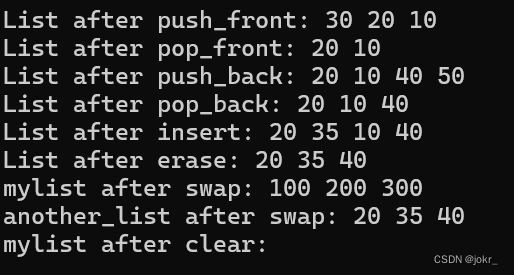
list的迭代器失效
前面说过,此处大家可将迭代器暂时理解成类似于指针,迭代器失效即迭代器所指向的节点的无效,即该节
点被删除了。因为list的底层结构为带头结点的双向循环链表,因此在list中进行插入时是不会导致list的迭代
器失效的,只有在删除时才会失效,并且失效的只是指向被删除节点的迭代器,其他迭代器不会受到影响。
void TestListIterator1()
{
int array[] = { 1, 2, 3, 4, 5, 6, 7, 8, 9, 0 };
list<int> l(array, array+sizeof(array)/sizeof(array[0]));
auto it = l.begin();
while (it != l.end())
{
// erase()函数执行后,it所指向的节点已被删除,因此it无效,在下一次使用it时,必须先给其赋值
l.erase(it);
++it;
}
}
// 改正
void TestListIterator()
{
int array[] = { 1, 2, 3, 4, 5, 6, 7, 8, 9, 0 };
list<int> l(array, array + sizeof(array) / sizeof(array[0]));
auto it = l.begin();
while (it != l.end())
{
l.erase(it++);
}
}



